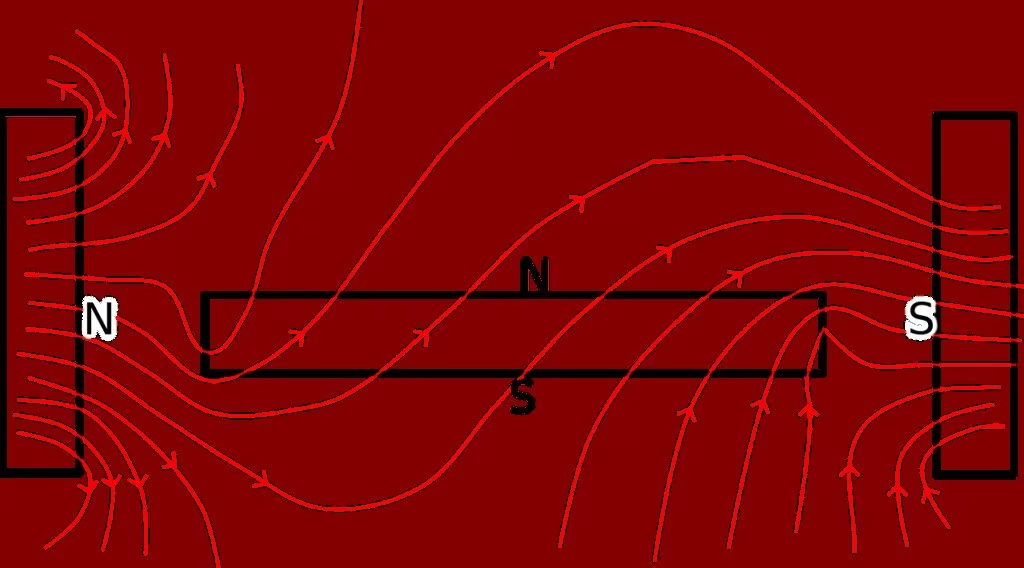The Unseen Foundation: Why Basic Science Drives Global Change
Every technological marvel, from the smartphone in your hand to the life-saving vaccine administered globally, rests upon a bedrock of basic science. Basic science, or fundamental research, is driven purely by curiosity—the quest for knowledge for its own sake, without an immediate practical application in mind. Yet, history consistently proves that these seemingly abstract discoveries are the most transformative.
When scientists like Albert Einstein or James Clerk Maxwell were formulating their theories, they were not trying to invent GPS or Wi-Fi; they were trying to understand the universe. It is this dedication to foundational truth, often supported by institutions like the National Science Foundation (NSF) and the National Institutes of Health (NIH), that ultimately yields the most profound societal benefits.
This analysis explores seven pivotal basic science discoveries—the pure, foundational knowledge—that have fundamentally altered human civilization, demonstrating the irreplaceable value of investing in curiosity-driven research.
The Seven Pillars of Modern Scientific Civilization
The following breakthroughs represent moments when humanity gained a radically new understanding of reality, paving the way for the applied technologies that define the 21st century.
1. The Structure of DNA: The Blueprint of Life
Basic Discovery: In 1953, James Watson, Francis Crick, Maurice Wilkins, and Rosalind Franklin elucidated the double helix structure of deoxyribonucleic acid (DNA). This was a pure biological discovery, revealing how genetic information is stored, replicated, and transmitted. It answered the fundamental question of heredity.
World-Changing Impact: This knowledge provided the operating manual for life itself. It launched the entire field of molecular biology and biotechnology. Applications include:
- Modern Medicine: Gene therapy, personalized medicine, and the development of new diagnostic tools.
- Forensics: DNA fingerprinting, revolutionizing criminal justice.
- Agriculture: Genetically modified crops (GMOs) for enhanced resilience and yield.

2. Quantum Mechanics: The Engine of the Digital Age
Basic Discovery: Developed primarily between 1900 and 1930 by physicists including Max Planck, Niels Bohr, Werner Heisenberg, and Erwin Schrödinger, quantum mechanics describes the behavior of matter and energy at the atomic and subatomic levels. It was a purely theoretical framework, challenging classical physics.
World-Changing Impact: Without quantum mechanics, modern electronics would be impossible. It provided the theoretical basis for understanding how electrons behave in solids, leading directly to:
- The Transistor: The fundamental building block of all microprocessors and computer memory.
- Lasers: Essential for fiber optics, data storage, medical surgery, and global communication.
- Nuclear Energy: The understanding of atomic structure and forces.
3. Germ Theory: Understanding the Invisible Enemy
Basic Discovery: Pioneering work by Louis Pasteur and Robert Koch in the mid-to-late 19th century established that specific microorganisms (germs) are the cause of many diseases. Before this, illness was often attributed to bad air (miasma) or divine punishment.
World-Changing Impact: Germ theory was perhaps the single greatest public health breakthrough. It transformed medicine from a speculative art into a science, leading to:
- Sanitation and Hygiene: The widespread adoption of handwashing, clean water systems, and sewage treatment, dramatically extending human lifespan.
- Sterilization: Antiseptic techniques in surgery (pioneered by Joseph Lister), making complex operations survivable.
- Vaccinology: The systematic development of vaccines based on understanding pathogens.
4. Electromagnetism: Unifying Forces
Basic Discovery: In the 1860s, James Clerk Maxwell synthesized the previously separate phenomena of electricity, magnetism, and light into a single, elegant set of equations. This was a purely mathematical and theoretical achievement, predicting the existence of electromagnetic waves.
World-Changing Impact: Maxwell’s equations provided the framework for harnessing and manipulating energy and information across distances. Every modern communication technology relies on this foundation:
- Radio and Television: Transmission of signals via electromagnetic waves.
- Wireless Communication: Cell phones, Wi-Fi, and Bluetooth.
- Electric Power Generation: The design of efficient motors, generators, and transformers.

5. General Relativity: Mapping the Cosmos
Basic Discovery: Published by Albert Einstein in 1915, the theory of General Relativity fundamentally redefined gravity, describing it not as a force, but as the curvature of spacetime caused by mass and energy. This was a purely theoretical and cosmological insight.
World-Changing Impact: While seemingly abstract, General Relativity is essential for precision technology. Its most common application is the Global Positioning System (GPS).
- GPS Accuracy: Satellite clocks run faster than ground clocks due to the weaker gravitational field (a relativistic effect). Without constant, precise corrections based on Einstein’s equations, GPS navigation would accumulate errors of about 10 kilometers per day, rendering it useless.
- Cosmology: Provides the framework for understanding black holes, the expansion of the universe, and gravitational waves.
6. The Principle of Vaccination: Engineered Immunity
Basic Discovery: While smallpox inoculation was practiced earlier, Edward Jenner’s systematic observation in 1796 that exposure to cowpox conferred immunity against smallpox established the core principle of vaccination: using a weakened or related pathogen to safely stimulate the immune system. This was a biological observation leading to a preventative strategy.
World-Changing Impact: Vaccination is arguably the greatest medical intervention in history, saving hundreds of millions of lives and leading to the global eradication of smallpox.
- Disease Control: Control and near-eradication of diseases like polio, measles, and diphtheria.
- Immunology: Established the field of immunology, driving research into autoimmune diseases and cancer treatments.
7. Plate Tectonics: A Dynamic Earth
Basic Discovery: Developed over decades, culminating in the 1960s, the theory of plate tectonics unified disparate geological observations (continental drift, seafloor spreading, earthquake patterns) into a cohesive model of the Earth’s surface. This was a fundamental geological insight into the planet’s mechanics.
World-Changing Impact: Understanding the movement of tectonic plates is crucial for modern resource management and hazard mitigation.
- Resource Exploration: Predicting the location of oil, gas, and mineral deposits, which often form at plate boundaries.
- Hazard Mitigation: Better prediction and understanding of volcanic eruptions, tsunamis, and earthquakes, allowing for improved infrastructure planning and early warning systems.

The Enduring Value of Curiosity-Driven Research
These seven examples underscore a critical lesson for policymakers and funding bodies: the greatest returns on investment often come from research that has no immediate commercial goal. Basic science is the ultimate long-term investment.
As the scientific community continues to push the boundaries of knowledge—whether through particle accelerators exploring fundamental forces or deep-sea exploration revealing new biological systems—the next world-changing discovery is likely already underway in a university or national lab.
“The greatest discoveries are often those that answer questions we didn’t even know we should be asking. That is the essence of basic science.”
In the current climate of rapid technological advancement, maintaining robust, stable funding for fundamental research is not a luxury; it is a necessity for future innovation, economic competitiveness, and global health security.
Key Takeaways: The Legacy of Basic Science
Investing in fundamental research, driven by curiosity, is the engine of civilization’s progress. Here are the essential points regarding these foundational discoveries:
- Unforeseen Applications: Discoveries like General Relativity (1915) took decades to find their most crucial application (GPS, 1990s), proving that basic knowledge must precede practical technology.
- Health Revolution: Germ Theory and Vaccination fundamentally transformed human lifespan and quality of life, eradicating diseases that plagued humanity for millennia.
- Digital Foundation: Quantum Mechanics provided the theoretical basis for the transistor, making the entire digital revolution possible.
- Interconnectedness: These basic insights often cross disciplines; for instance, understanding DNA relies on chemistry, physics, and biology.
- Future Innovation: Continued investment in basic science today—in areas like materials science, artificial intelligence theory, and cosmology—will determine the major technological and societal shifts of the mid-21st century.
Conclusion: Sustaining the Scientific Pipeline
The history of science demonstrates that the pursuit of fundamental knowledge, free from immediate commercial pressures, yields the most unpredictable and profound results. From understanding the atom to mapping the human genome, basic science provides the raw material for innovation.
For society to continue benefiting from breakthroughs that solve global challenges—from climate change to pandemics—governments and private institutions must prioritize the sustained, long-term funding of curiosity-driven research. The discoveries of the past are the technologies of today; the basic research conducted in 2025 will define the world of 2050.
What’s Next in Fundamental Research
Today’s basic science is focused on areas like understanding the dark matter and dark energy that make up most of the universe, developing room-temperature superconductors, and mapping the human connectome (the brain’s wiring diagram). These foundational efforts promise the next wave of world-changing applications, potentially leading to breakthroughs in energy storage, computing power, and neurological health within the next few decades.
Originally published: October 29, 2025
Editorial note: Our team reviewed and enhanced this coverage with AI-assisted tools and human editing to add helpful context while preserving verified facts and quotations from the original source.
We encourage you to consult the publisher above for the complete report and to reach out if you spot inaccuracies or compliance concerns.

